One of the best things about living in Greece is the history. Literally, with every stone you lift, you’re bound to find a wee bit of history underneath.
This weekend, we went to Nafplio and visited the castle of Palamidi. Nafplio was the second capital of Greece, post-revolution. However, it has a much older history. Founded in antiquity, the city became an important seaport in the Middle Ages during the Frankokratia as part of the lordship of Argos and Nauplia, held initially by the de la Roche following the Fourth Crusade before coming under the Republic of Venice and, lastly, the Ottoman Empire. The city was the capital of the First Hellenic Republic and of the Kingdom of Greece, from 1827 until 1834.
A Rich History
The city was originally the port of nearby Argos. Pausanias mentions in the 2nd century the ruins of the walls of a temple of Poseidon, certain forts, and a fountain named Canathus, by washing in which Hera was said to have renewed her virginity every year.
Akronafplia (lit. edge of Nafplio) is the oldest part of the city. Until the 13th century, it was a town of its own but the Venetians and Franks transformed it into part of the town’s fortifications. Nafplio was taken in 1212 by French crusaders of the Principality of Achaea. It became part of the lordship of Argos and Nauplia, which in 1388 was sold to the Republic of Venice, who regarded it as one of their most important places in the Levant. During the subsequent 150 years, the lower city was expanded and fortified, and new fortifications were added to Akronafplia.
During the Greek War of Independence, Nafplio was a major Ottoman stronghold and was besieged for more than a year. The town finally surrendered to Staikopoulos and Kolokotronis in 1822 on account of forced starvation. After its capture, because of its strong fortifications, it became the seat of the provisional government of Greece.
Count Ioannis Kapodistrias, the first head of state of newly liberated Greece, set foot on the Greek mainland for the first time in Nafplio in 1828 and made it the official capital of Greece in 1829. He was assassinated on 9 October 1831 by members of the Mavromichalis family, on the steps of the church of Saint Spyridon in Nafplio. After his assassination, a period of anarchy followed, until the arrival of King Otto and the establishment of the new Kingdom of Greece. Nafplio remained the capital of the kingdom until 1834, when King Otto decided to move the capital to Athens.
Nafplio soon became one of the first areas to develop mass tourism in the mainland. Nowadays it is one of the most popular destinations in Greece and attracts a large variety of tourists. Due to its architectural legacy, its proximity to the capital, Athens, and its mild and pleasant climate it attracts visitors all year round, and it is the most popular destination for weekend or one-day excursions.
- Syntagma Square, the heart of the Old Town
- Syntagma Square
- Old Town
- Electra and Mary-Natalie on the promenade overlooking the fortified islet of Burji
- Otto, first King of Greece
- An amazing iconostasis (the separation between the Holy of Holies and the main church)
- Palamidi as seen from the Old Town
- Palamidi from the Old Town
The Castle of Palamidi
Under Venetian rule, the city repelled Ottoman attacks and sieges twice, once by Mehmed the Conqueror during the Ottoman–Venetian War (1463–79) and then by Suleiman the Magnificent. However, the city surrendered eventually to the Ottomans in 1540, who renamed it Mora Yenişehri and established it as the seat of a sanjak.
The Venetians retook Nafplio in 1685 and made it the capital of their “Kingdom of the Morea”. The city was strengthened by building the castle of Palamidi, which was in fact the last major construction of the Venetian empire overseas. However, only 80 soldiers were assigned to defend the city and it was easily retaken by the Ottomans in 1715. Palamidi is located on a hill north of the old town.
- The Bastion of St. Andrew
- The Bastion of St. Andrew
- The entrance to St. Andrew’s Bastion, still guarded by the Venetian lion
- The Bastion of St. Andrew
- The Bastion of St. Andrew
- The Bastion of Miltiades
- Cannonballs, both stone and lead
- The Bastion of Miltiades
- The Bastion of Miltiades
- The Bastion of Miltiades
- The Bastion of Miltiades
- The Bastion of Miltiades
- The Bastion of Miltiades
- The Bastion of Miltiades
- The Bastion of Epaminondas
If you ever find yourselves in Greece, it’s well worth a visit. If not, I hope at least that the photos have inspired your writing!


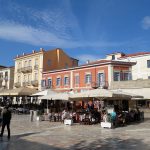
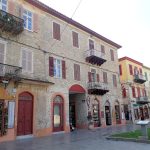

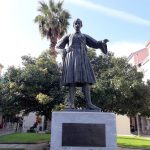
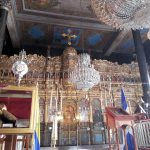
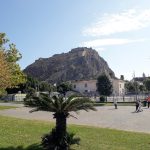


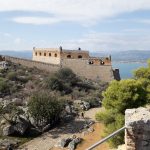
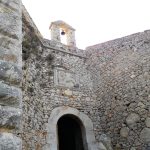
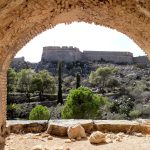
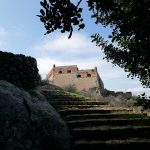



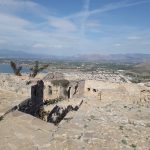
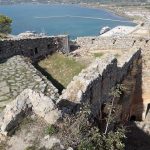

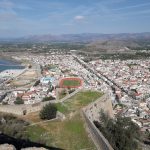








This was the first time I’d heard about a Capital being changed. How often in history did that happen?
More often than you might expect, actually! The Romans alone must have changed capitals half a dozen times.
The city looks gorgeous as always. Glad you could have that wonderful escape. I was there last August and already miss it, LOL! Thank you for sharing 🙂
Thank you, Fros! We hadn’t been there in ages. Felt good to be back 🙂
So many places to see!!! If not for the pandemic, we would have seen some of them last year and more this year. Greece and other European destinations are on the list!!
Let me know so I can show you around 🙂
Absolutely!
The Argives were bitter enemies of the Spartans. Apparently once rather than have an all out war they agreed to select 150 men each and fight it out. They fought until one Argive was left standing but the Spartans did not accept the result, so they went and had a battle with their full armies. Those clashes must have been absolutely brutal.
Spartans were all about honor… until it looked like they were losing 😀
Interesting to hear that this city was the port for Argos. I am intrigued by the Argives who had the reputation as the best warriors in Greece after the Spartans.
Ironically enough, today, Argos is like Nafplio’s poor cousin!